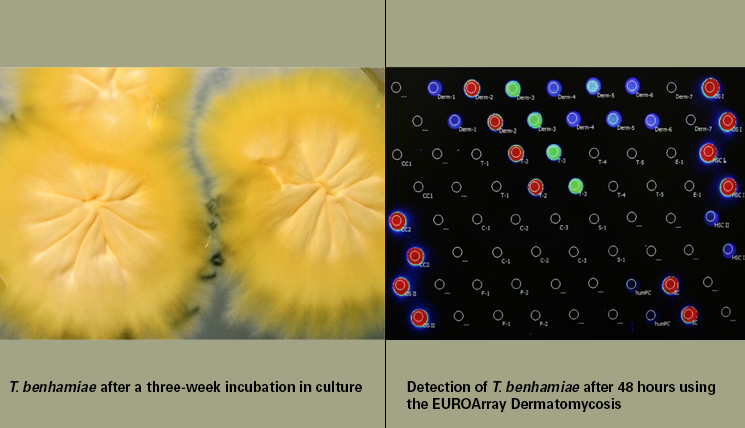Guest contribution:
 Article series on the subject of state-of-the-art mycology in dermatology,
Article series on the subject of state-of-the-art mycology in dermatology,
5th article
by Prof Hans-Jürgen Tietz, Director of the Institute of Fungal Diseases in Berlin, Germany
The word Corona is still on everyone’s lips. In the wake of the virus, however, other pathogens are also spreading. Some benefit from the pandemic, among them the fungal pathogens. Prime examples of the increase in mycoses are infections with anthropophilic pathogens such as T. rubrum, C. albican, C. auris in COVID-19 patients in the USA and M. furfur, but also zoophilic pathogens such as T. benhamiae, especially in children.
The risk of infection with these pathogens increases during a lockdown due to people being in confined spaces. Consequently, children come into closer contact with infection sources such as parents, grandparents and pets. And Mum and Dad may put less effort into treating their athlete’s foot or infected nails than in non-crisis times − either due to fear of catching COVID-19 in pharmacies or doctor’s practices or due to closed skin clinics and dermatological practices with reduced opening hours.
And children, even more than usual, may find solace with their pets in this mentally challenging isolation: “Oscar is the only one who understands me”.
These situations may lead to mycoses which remain undetected or persist untreated and thus may worsen over time. One example is tinea capitis caused by close contact with guinea pigs. These animals can carry two pathogens affecting the head: T. mentagrophytes and T. benhamiae, which arrived here via the so-called skinny pigs from Japan due to microbial globalisation.
Tinea capitis is a difficult disease since the clinical symptoms are often severe; the disease affects almost exclusively children and must always be treated systemically. It also poses a diagnostic problem since children visiting the dermatologist are often already under treatment. Culture is then often no longer possible even though the infection does not heal.
Diagnostics by culture is also difficult with slowly growing pathogens such as T. violaceum or T. verrucosum. Even though it gives us gorgeous cultures, T. benhamiae is hard to identify by conventional methods. PCR represents the solution to all these diagnostic problems. In contrast to culture, it yields a clear positive result within 48 hours. This is a revolution also from a clinical perspective, since infections which are diagnosed too late can lead to scarring on the head, which may constitute a persisting trauma for children.
There is also the broad spectrum of pathogens, ranging from classics such as M. canis to more exotic ones such as M. audouinii or T. soudanense. T. schoenleinii, the causative agent of favus, is also knocking at our door again. No other mycotic disease has such a broad range of causative pathogens as tinea capitis. The EUROIMMUN microarray PCR detects all possible pathogens!
The basis of therapy is a thorough local treatment combined with systemic treatment. This is sustained until the infection is clinically and microbiologically healed. Ideally, complete healing is indicated by a negative PCR, so that a relapse and further infections are prevented. This is especially important in the case of highly infectious agents such as M. canis and M. audouinii, which may cause epidemics.
Many dermatologists will still remember the tinea capitis epidemic in Bonn in the years 2015 to 2018. It was caused by M. audouinii, the causative agent of the “orphanage disease” which especially affects children in confined spaces. The possibility to swiftly detect and track the pathogen by PCR is another benefit of gene diagnostics, especially with highly contagious fungal pathogens. PCR is thus a valuable instrument to combat epidemics. It is also increasingly used by veterinarians, for which our patients and their families are grateful: “My hair is growing again and Oscar was allowed to stay with us”. An important friend, not only in these times.
The articles under the rubric “Guest contribution” only reflect the views of the respective authors. Responsibility for the legality and content of the articles lies solely with the authors. EUROIMMUN does not assume liability for the completeness, accuracy and currentness of the information provided.
